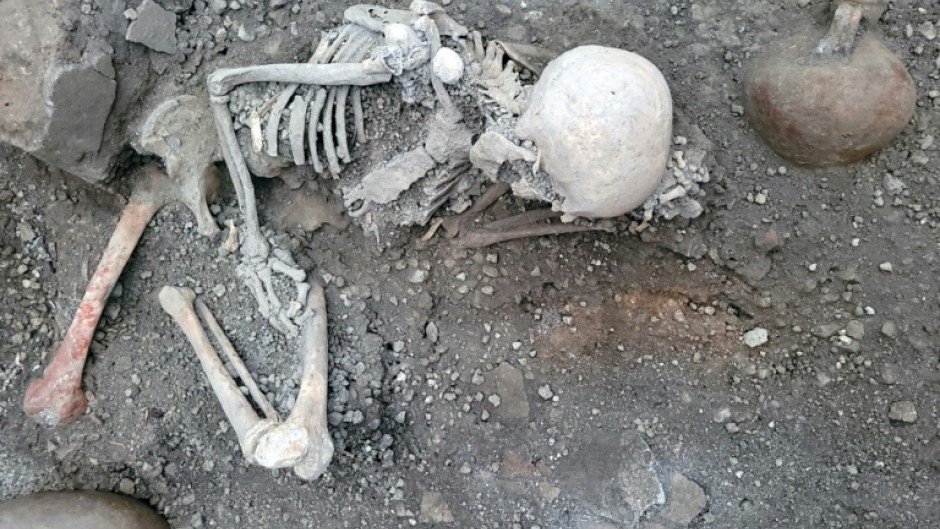
POMPEII - Archaeologists at Pompeii said Tuesday that they had uncovered two new skeletons of male victims who likely died in an earthquake that accompanied the devastating volcanic eruption of Mount Vesuvius, which buried the Italian city in ash in AD 79.
The pair, believed to be two males aged at least 55, were found in recent excavations at Pompeii's "Chaste Lovers" block of buildings.
They are believed to have been killed as an earthquake knocked down a wall in the room where they sought shelter. One of the skeletons had an arm raised as if in defence.
The earthquake struck as the huge blast from nearby Mount Vesuvius covered the city of Pompeii with thick volcanic ash, preserving the bodies of many of its residents.
To date, the remains of more than 1,000 people have been uncovered throughout the sprawling site, most recently in November 2020 when archaeologists unearthed two bodies, believed to be a young enslaved person and his possible owner.
The two newly discovered victims announced Tuesday "probably died due to multiple traumas caused by the collapse of part of the building", the Pompeii archaeological park said in a statement.

They were found in what is believed to be a storeroom inside the "Chaste Lovers" block, where colourful frescoes and the skeletons of mules who worked the millstones for grain have been uncovered in the past.
The skeletons were found lying on their side with their legs curled up, and one wore a ring on his left hand.
Archaeologists estimate that 15 to 20 percent of Pompeii's population died in the eruption, mostly from thermal shock as a giant cloud of gases and ash covered the city.
- Protecting himself -

Earthquakes before and during the eruption, as documented in letters by Roman author Pliny the Younger, also took their toll.
"Among the causes of death, the collapse of buildings, in some cases due to earthquakes that accompanied the eruption, proved to be a lethal threat," the park said.
Pompeii's director, Gabriel Zuchtriegel, said modern technology was helping archaeologists "better understand the hell that completely destroyed the city of Pompeii in two days, killing many inhabitants: children, women and men".

Traces of what is believed to be a cloth bundle were found next to one of the victims, containing necklace beads and coins.
Inside the room was an amphora and a collection of bowls and jugs, while an adjacent room contained a home shrine in the form of a fresco, and a narrow bathroom with a toilet.
In the room where the men were found, part of a wall had collapsed, hitting one of the victims "whose raised arm perhaps refers to the tragic image of a vain attempt to protect himself from falling masonry", the park said.

